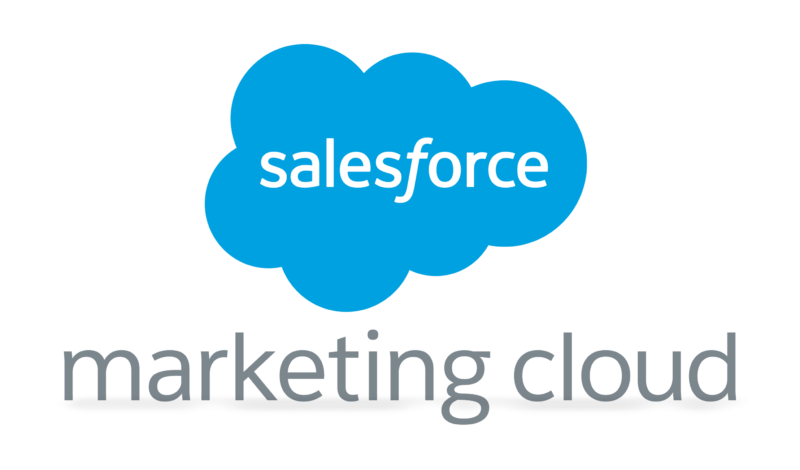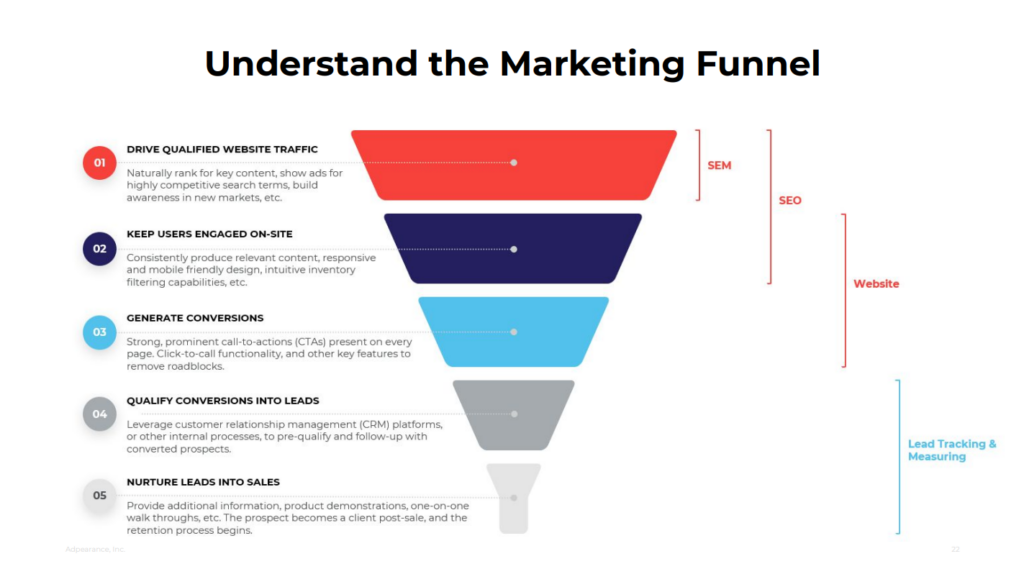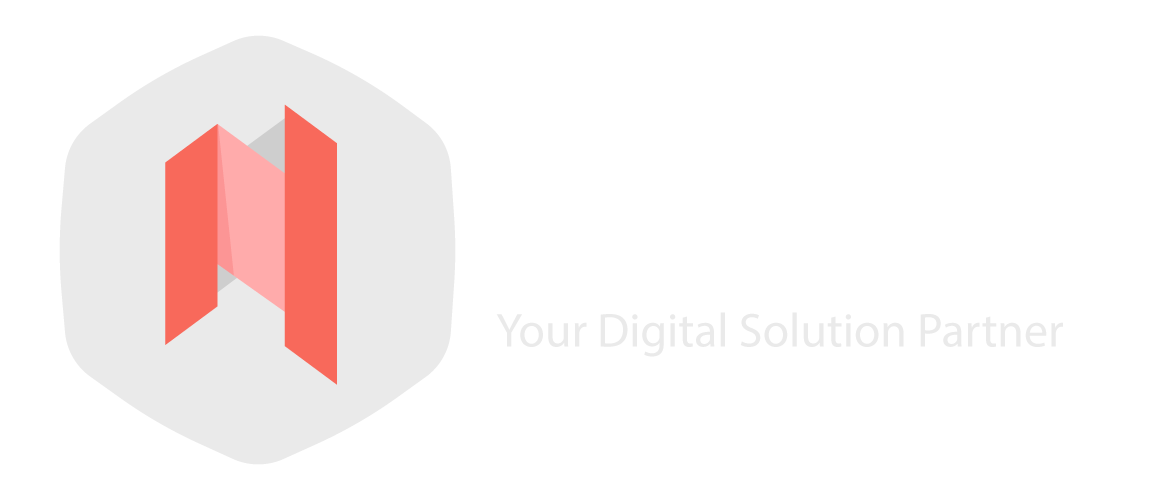Research is the key
Fuel Your Growth with Quality Leads!
Are you ready to supercharge your business growth and generate a steady stream of high-quality leads? Look no further! Our lead generation services are your key to unlocking untapped potential. We specialize in crafting tailored lead generation strategies that will fuel your B2B sales pipeline and drive revenue to new heights.
10X Your Client Acquisition Rate
We help businesses effectively identify and cultivate potential customers, driving them through the sales funnel to conversion. With a focus on maximizing ROI and achieving measurable results.
Recognize potential customers by understanding their needs and demographics.
Draw prospects through compelling content and marketing.
Obtain contact information and preferences for personalized engagement.
Foster long-term relationships and customer loyalty through continued value delivery.
Elevate Your Sales Game Today!
What Our Lead Generation Services Includes?
Creating an effective marketing sales funnel is an ongoing process, and continuous improvement is key to successful lead generation.
Target lead identification is the process of identifying and defining the specific individuals or organizations that are most likely to become your customers. This is a fundamental step in lead generation and marketing, as it allows you to focus your efforts and resources on reaching the right audience.
This process typically involves several steps:
Buyer Personas: To begin, you create detailed buyer personas or customer profiles. These personas are fictional representations of your ideal customers and include demographic information, behavior, pain points, goals, and preferences.
Segmentation: Next, you segment your broader audience into different groups based on common characteristics. This segmentation can be based on factors like age, gender, location, industry, job title, interests, and more.
Data Analysis: Leveraging data analytics, you analyze your existing customer data and identify patterns and trends. This data can help in understanding what types of leads are most likely to convert.
Market Research: Conduct market research to gain insights into your target market. This can involve surveys, interviews, and studying competitors to better understand your potential leads.
Lead Scoring: Implement lead scoring, a method to assign values to leads based on their conversion likelihood. This helps prioritize leads and focus resources on the most promising prospects.
Customer Profiling: Create detailed profiles for different segments of your audience, outlining their pain points, needs, and how your product or service can address them.
Targeted Marketing: Craft and implement marketing campaigns specifically tailored to reach your target leads. This includes personalized messaging and the selection of appropriate channels and platforms to reach them.
By effectively identifying leads, businesses can focus their marketing and sales efforts on individuals who are more likely to convert, resulting in a more efficient and cost-effective lead-generation process.
Lead nurturing is a critical component of the lead generation process, involving the building of relationships with potential customers over time. The goal is to guide these leads through the sales funnel, educate them about your products or services, address their concerns, and eventually convert them into paying customers. Here are some key steps involved in the lead nurturing process:
- Content Creation: Develop a variety of valuable and engaging content tailored to each segment of leads.
- Drip Campaigns: Create automated drip campaigns that gradually introduce leads to your products or services. Over a series of emails or other content, provide increasingly detailed information to nurture their interest.
Personalization: Customize your messages and content to match each lead’s preferences and actions.
Multi-Channel Approach: Engage with leads on various digital platforms, including social media, webinars, and chatbots, in addition to email.
Timely Follow-ups: Promptly respond to inquiries and engage with leads whenever they show interest. A delayed response can result in lost opportunities.
Educational Content: Position your brand as an authority in your industry by providing educational content that addresses common pain points and offers solutions.
Lead-Exclusive Offers: Create exclusive offers or promotions for leads to incentivize them to take the next step in the buying process, such as requesting a demo or trial.
Lead Re-engagement: For leads that have gone cold, develop re-engagement campaigns to reignite their interest. Offer fresh content or incentives to rekindle their engagement.
- Feedback Loop: Continuously seek feedback from leads to understand their needs and preferences better. This information can guide content creation and improve the nurturing process.
Progress Measurement: Regularly evaluate the effectiveness of your lead nurturing efforts. Assess conversion rates, engagement, and the overall ROI of your campaigns.
Effective lead nurturing can significantly increase conversion rates, build customer trust, and ultimately lead to more successful sales. It’s an ongoing process that requires adaptability and a deep understanding of your leads’ needs and behaviors.
Lead engagement is a critical component of the lead generation and conversion process that involves actively interacting with potential customers to build and maintain relationships. This process focuses on capturing the interest of leads, nurturing their engagement, and ultimately encouraging them to take desired actions, such as making a purchase or requesting a demo.
It encompasses various strategies and tactics, including personalized communication, content marketing, and feedback collection. Successful lead engagement entails providing value through informative and relevant content, addressing leads’ needs and concerns, and maintaining a consistent and meaningful presence across various digital channels, such as email, social media, webinars, and chatbots. Monitoring and analyzing lead behavior and interactions help in tailoring engagement strategies to match the unique preferences and actions of each lead, ultimately guiding them through the sales funnel and toward conversion.
Lead engagement is an ongoing and dynamic process that requires adaptability and a customer-centric approach, aiming to build trust and loyalty for long-term customer relationships.
Lead re-evaluation or retrospection is a critical step in the lead generation process, focusing on the review and reassessment of leads that may have gone cold or were previously unresponsive. In this stage, businesses take a closer look at leads that have not yet converted into customers or have disengaged from the sales funnel. The goal is to rekindle their interest and bring them back into the lead nurturing process.
It’s a proactive strategy to make the most of existing leads, as acquiring new leads can be more expensive and time-consuming than re-engaging those who have already shown some level of interest. It helps maximize the value of the leads already in your database and offers a second chance to convert them into loyal customers. By tailoring your approach to their specific needs and concerns, businesses can potentially turn disengaged leads into valuable assets in the long run.
Lead optimization is a critical facet of the lead generation process that involves refining and enhancing your strategies to maximize the efficiency and effectiveness of your lead acquisition efforts. The primary goal of lead optimization is to ensure that you are attracting high-quality leads who are more likely to convert into paying customers. This process entails ongoing analysis, adjustment, and improvement of various aspects of your lead generation campaigns, from initial lead capture to the final conversion.
To achieve lead optimization, businesses employ a combination of strategies, including A/B testing of landing pages and lead capture forms to determine which versions generate the best results. Moreover, data analytics tools are used to evaluate lead behavior, helping to identify patterns and trends that can inform your lead generation strategy. By continually assessing the quality of leads and the performance of various channels, you can allocate resources more effectively, ultimately reducing costs and increasing the return on investment. Additionally, optimizing the lead nurturing process ensures that leads are engaged at the right time with the most relevant content, increasing the likelihood of conversion. By striving for lead optimization, businesses can fine-tune their lead generation activities to drive sustainable growth, achieve higher conversion rates, and enhance the overall customer acquisition experience.
Lead-capturing integrations are software or tools that connect and streamline the process of collecting and managing leads from various sources. These integrations are essential in modern marketing and lead generation efforts, as they help businesses efficiently gather and organize information about potential customers. Here are some key aspects of lead-capturing integrations:
Integration with Website Forms: Web-to-lead integrations often work with website forms, such as contact forms, sign-up forms, and subscription forms. When a visitor submits their information through these forms, the integration can automatically capture the data and store it in a centralized database.
Social Media Integrations: Many businesses use social media for lead generation. Lead-capturing integrations can connect to social media platforms, allowing for seamless lead data extraction from comments, messages, and posts. This data can then be added to the lead database.
Email Marketing Software: Integrations with email marketing platforms facilitate the automatic addition of leads to email lists. When someone signs up for a newsletter or provides their email address, the integration can ensure their information is added to the relevant email campaign.
CRM (Customer Relationship Management) Systems: Lead-capturing integrations often work in tandem with CRM systems. This enables the seamless transfer of lead information to the CRM, where it can be further managed and nurtured.
Marketing Automation Tools: Integrations with marketing automation software allow businesses to automate lead nurturing and follow-up processes. When a lead takes specific actions, such as downloading an ebook, the integration can trigger automated responses.
Data Enrichment Services: Some lead-capturing integrations offer data enrichment services that supplement the lead information with additional details, such as social media profiles, job titles, or company information. This enhances the quality and depth of the lead data.
Lead Scoring: Many integrations include lead scoring features that assign values to leads based on their behavior, helping businesses prioritize and focus their efforts on the most promising prospects.
Security and Compliance: Lead capturing integrations prioritize data security and compliance with data protection regulations like GDPR. They typically include features for securing and managing sensitive lead information.
By using lead-capturing integrations, businesses can streamline their lead generation processes, reduce manual data entry, and ensure that lead data is accurate and up-to-date. This efficiency enables more effective lead nurturing and conversion efforts, ultimately contributing to business growth.
Lead generation analytics and reporting are crucial components of a successful marketing and sales strategy. They involve the collection, analysis, and presentation of data related to lead generation efforts. These analytics and reports provide valuable insights into the performance of various lead generation channels, campaigns, and tactics, allowing businesses to make informed decisions and optimize their strategies.
Lead generation analytics and reporting enable businesses to make data-driven decisions, allocate resources more effectively, and continually refine their strategies. By understanding what works and what doesn’t, organizations can optimize their lead generation efforts to maximize the quality and quantity of leads and, ultimately, increase sales and revenue.
- Lead Identification
-
Target lead identification is the process of identifying and defining the specific individuals or organizations that are most likely to become your customers. This is a fundamental step in lead generation and marketing, as it allows you to focus your efforts and resources on reaching the right audience.
This process typically involves several steps:
Buyer Personas: To begin, you create detailed buyer personas or customer profiles. These personas are fictional representations of your ideal customers and include demographic information, behavior, pain points, goals, and preferences.
Segmentation: Next, you segment your broader audience into different groups based on common characteristics. This segmentation can be based on factors like age, gender, location, industry, job title, interests, and more.
Data Analysis: Leveraging data analytics, you analyze your existing customer data and identify patterns and trends. This data can help in understanding what types of leads are most likely to convert.
Market Research: Conduct market research to gain insights into your target market. This can involve surveys, interviews, and studying competitors to better understand your potential leads.
Lead Scoring: Implement lead scoring, a method to assign values to leads based on their conversion likelihood. This helps prioritize leads and focus resources on the most promising prospects.
Customer Profiling: Create detailed profiles for different segments of your audience, outlining their pain points, needs, and how your product or service can address them.
Targeted Marketing: Craft and implement marketing campaigns specifically tailored to reach your target leads. This includes personalized messaging and the selection of appropriate channels and platforms to reach them.
By effectively identifying leads, businesses can focus their marketing and sales efforts on individuals who are more likely to convert, resulting in a more efficient and cost-effective lead-generation process.
- Lead Nurturing
-
Lead nurturing is a critical component of the lead generation process, involving the building of relationships with potential customers over time. The goal is to guide these leads through the sales funnel, educate them about your products or services, address their concerns, and eventually convert them into paying customers. Here are some key steps involved in the lead nurturing process:
- Content Creation: Develop a variety of valuable and engaging content tailored to each segment of leads.
- Drip Campaigns: Create automated drip campaigns that gradually introduce leads to your products or services. Over a series of emails or other content, provide increasingly detailed information to nurture their interest.
Personalization: Customize your messages and content to match each lead’s preferences and actions.
Multi-Channel Approach: Engage with leads on various digital platforms, including social media, webinars, and chatbots, in addition to email.
Timely Follow-ups: Promptly respond to inquiries and engage with leads whenever they show interest. A delayed response can result in lost opportunities.
Educational Content: Position your brand as an authority in your industry by providing educational content that addresses common pain points and offers solutions.
Lead-Exclusive Offers: Create exclusive offers or promotions for leads to incentivize them to take the next step in the buying process, such as requesting a demo or trial.
Lead Re-engagement: For leads that have gone cold, develop re-engagement campaigns to reignite their interest. Offer fresh content or incentives to rekindle their engagement.
- Feedback Loop: Continuously seek feedback from leads to understand their needs and preferences better. This information can guide content creation and improve the nurturing process.
Progress Measurement: Regularly evaluate the effectiveness of your lead nurturing efforts. Assess conversion rates, engagement, and the overall ROI of your campaigns.
Effective lead nurturing can significantly increase conversion rates, build customer trust, and ultimately lead to more successful sales. It’s an ongoing process that requires adaptability and a deep understanding of your leads’ needs and behaviors.
- Content Creation: Develop a variety of valuable and engaging content tailored to each segment of leads.
- Lead Engagement
-
Lead engagement is a critical component of the lead generation and conversion process that involves actively interacting with potential customers to build and maintain relationships. This process focuses on capturing the interest of leads, nurturing their engagement, and ultimately encouraging them to take desired actions, such as making a purchase or requesting a demo.
It encompasses various strategies and tactics, including personalized communication, content marketing, and feedback collection. Successful lead engagement entails providing value through informative and relevant content, addressing leads’ needs and concerns, and maintaining a consistent and meaningful presence across various digital channels, such as email, social media, webinars, and chatbots. Monitoring and analyzing lead behavior and interactions help in tailoring engagement strategies to match the unique preferences and actions of each lead, ultimately guiding them through the sales funnel and toward conversion.
Lead engagement is an ongoing and dynamic process that requires adaptability and a customer-centric approach, aiming to build trust and loyalty for long-term customer relationships.
- Leads Retrospection
-
Lead re-evaluation or retrospection is a critical step in the lead generation process, focusing on the review and reassessment of leads that may have gone cold or were previously unresponsive. In this stage, businesses take a closer look at leads that have not yet converted into customers or have disengaged from the sales funnel. The goal is to rekindle their interest and bring them back into the lead nurturing process.
It’s a proactive strategy to make the most of existing leads, as acquiring new leads can be more expensive and time-consuming than re-engaging those who have already shown some level of interest. It helps maximize the value of the leads already in your database and offers a second chance to convert them into loyal customers. By tailoring your approach to their specific needs and concerns, businesses can potentially turn disengaged leads into valuable assets in the long run.
- Lead Optimization
-
Lead optimization is a critical facet of the lead generation process that involves refining and enhancing your strategies to maximize the efficiency and effectiveness of your lead acquisition efforts. The primary goal of lead optimization is to ensure that you are attracting high-quality leads who are more likely to convert into paying customers. This process entails ongoing analysis, adjustment, and improvement of various aspects of your lead generation campaigns, from initial lead capture to the final conversion.
To achieve lead optimization, businesses employ a combination of strategies, including A/B testing of landing pages and lead capture forms to determine which versions generate the best results. Moreover, data analytics tools are used to evaluate lead behavior, helping to identify patterns and trends that can inform your lead generation strategy. By continually assessing the quality of leads and the performance of various channels, you can allocate resources more effectively, ultimately reducing costs and increasing the return on investment.
Additionally, optimizing the lead nurturing process ensures that leads are engaged at the right time with the most relevant content, increasing the likelihood of conversion. By striving for lead optimization, businesses can fine-tune their lead generation activities to drive sustainable growth, achieve higher conversion rates, and enhance the overall customer acquisition experience.
- Lead Capturing
-
Lead-capturing integrations are software or tools that connect and streamline the process of collecting and managing leads from various sources. These integrations are essential in modern marketing and lead generation efforts, as they help businesses efficiently gather and organize information about potential customers. Here are some key aspects of lead-capturing integrations:
Integration with Website Forms: Web-to-lead integrations often work with website forms, such as contact forms, sign-up forms, and subscription forms. When a visitor submits their information through these forms, the integration can automatically capture the data and store it in a centralized database.
Social Media Integrations: Many businesses use social media for lead generation. Lead-capturing integrations can connect to social media platforms, allowing for seamless lead data extraction from comments, messages, and posts. This data can then be added to the lead database.
Email Marketing Software: Integrations with email marketing platforms facilitate the automatic addition of leads to email lists. When someone signs up for a newsletter or provides their email address, the integration can ensure their information is added to the relevant email campaign.
CRM (Customer Relationship Management) Systems: Lead-capturing integrations often work in tandem with CRM systems. This enables the seamless transfer of lead information to the CRM, where it can be further managed and nurtured.
Marketing Automation Tools: Integrations with marketing automation software allow businesses to automate lead nurturing and follow-up processes. When a lead takes specific actions, such as downloading an ebook, the integration can trigger automated responses.
Data Enrichment Services: Some lead-capturing integrations offer data enrichment services that supplement the lead information with additional details, such as social media profiles, job titles, or company information. This enhances the quality and depth of the lead data.
Lead Scoring: Many integrations include lead scoring features that assign values to leads based on their behavior, helping businesses prioritize and focus their efforts on the most promising prospects.
Security and Compliance: Lead capturing integrations prioritize data security and compliance with data protection regulations like GDPR. They typically include features for securing and managing sensitive lead information.
By using lead-capturing integrations, businesses can streamline their lead generation processes, reduce manual data entry, and ensure that lead data is accurate and up-to-date. This efficiency enables more effective lead nurturing and conversion efforts, ultimately contributing to business growth.
- Lead Analytics
-
Lead generation analytics and reporting are crucial components of a successful marketing and sales strategy. They involve the collection, analysis, and presentation of data related to lead generation efforts. These analytics and reports provide valuable insights into the performance of various lead generation channels, campaigns, and tactics, allowing businesses to make informed decisions and optimize their strategies.
Lead generation analytics and reporting enable businesses to make data-driven decisions, allocate resources more effectively, and continually refine their strategies. By understanding what works and what doesn’t, organizations can optimize their lead generation efforts to maximize the quality and quantity of leads and, ultimately, increase sales and revenue.
Target lead identification is the process of identifying and defining the specific individuals or organizations that are most likely to become your customers. This is a fundamental step in lead generation and marketing, as it allows you to focus your efforts and resources on reaching the right audience.
This process typically involves several steps:
Buyer Personas: To begin, you create detailed buyer personas or customer profiles. These personas are fictional representations of your ideal customers and include demographic information, behavior, pain points, goals, and preferences.
Segmentation: Next, you segment your broader audience into different groups based on common characteristics. This segmentation can be based on factors like age, gender, location, industry, job title, interests, and more.
Data Analysis: Leveraging data analytics, you analyze your existing customer data and identify patterns and trends. This data can help in understanding what types of leads are most likely to convert.
Market Research: Conduct market research to gain insights into your target market. This can involve surveys, interviews, and studying competitors to better understand your potential leads.
Lead Scoring: Implement lead scoring, a method to assign values to leads based on their conversion likelihood. This helps prioritize leads and focus resources on the most promising prospects.
Customer Profiling: Create detailed profiles for different segments of your audience, outlining their pain points, needs, and how your product or service can address them.
Targeted Marketing: Craft and implement marketing campaigns specifically tailored to reach your target leads. This includes personalized messaging and the selection of appropriate channels and platforms to reach them.
By effectively identifying leads, businesses can focus their marketing and sales efforts on individuals who are more likely to convert, resulting in a more efficient and cost-effective lead-generation process.
Lead nurturing is a critical component of the lead generation process, involving the building of relationships with potential customers over time. The goal is to guide these leads through the sales funnel, educate them about your products or services, address their concerns, and eventually convert them into paying customers. Here are some key steps involved in the lead nurturing process:
- Content Creation: Develop a variety of valuable and engaging content tailored to each segment of leads.
- Drip Campaigns: Create automated drip campaigns that gradually introduce leads to your products or services. Over a series of emails or other content, provide increasingly detailed information to nurture their interest.
Personalization: Customize your messages and content to match each lead’s preferences and actions.
Multi-Channel Approach: Engage with leads on various digital platforms, including social media, webinars, and chatbots, in addition to email.
Timely Follow-ups: Promptly respond to inquiries and engage with leads whenever they show interest. A delayed response can result in lost opportunities.
Educational Content: Position your brand as an authority in your industry by providing educational content that addresses common pain points and offers solutions.
Lead-Exclusive Offers: Create exclusive offers or promotions for leads to incentivize them to take the next step in the buying process, such as requesting a demo or trial.
Lead Re-engagement: For leads that have gone cold, develop re-engagement campaigns to reignite their interest. Offer fresh content or incentives to rekindle their engagement.
- Feedback Loop: Continuously seek feedback from leads to understand their needs and preferences better. This information can guide content creation and improve the nurturing process.
Progress Measurement: Regularly evaluate the effectiveness of your lead nurturing efforts. Assess conversion rates, engagement, and the overall ROI of your campaigns.
Effective lead nurturing can significantly increase conversion rates, build customer trust, and ultimately lead to more successful sales. It’s an ongoing process that requires adaptability and a deep understanding of your leads’ needs and behaviors.
Lead engagement is a critical component of the lead generation and conversion process that involves actively interacting with potential customers to build and maintain relationships. This process focuses on capturing the interest of leads, nurturing their engagement, and ultimately encouraging them to take desired actions, such as making a purchase or requesting a demo.
It encompasses various strategies and tactics, including personalized communication, content marketing, and feedback collection. Successful lead engagement entails providing value through informative and relevant content, addressing leads’ needs and concerns, and maintaining a consistent and meaningful presence across various digital channels, such as email, social media, webinars, and chatbots. Monitoring and analyzing lead behavior and interactions help in tailoring engagement strategies to match the unique preferences and actions of each lead, ultimately guiding them through the sales funnel and toward conversion.
Lead engagement is an ongoing and dynamic process that requires adaptability and a customer-centric approach, aiming to build trust and loyalty for long-term customer relationships.
Lead re-evaluation or retrospection is a critical step in the lead generation process, focusing on the review and reassessment of leads that may have gone cold or were previously unresponsive. In this stage, businesses take a closer look at leads that have not yet converted into customers or have disengaged from the sales funnel. The goal is to rekindle their interest and bring them back into the lead nurturing process.
It’s a proactive strategy to make the most of existing leads, as acquiring new leads can be more expensive and time-consuming than re-engaging those who have already shown some level of interest. It helps maximize the value of the leads already in your database and offers a second chance to convert them into loyal customers. By tailoring your approach to their specific needs and concerns, businesses can potentially turn disengaged leads into valuable assets in the long run.
Lead optimization is a critical facet of the lead generation process that involves refining and enhancing your strategies to maximize the efficiency and effectiveness of your lead acquisition efforts. The primary goal of lead optimization is to ensure that you are attracting high-quality leads who are more likely to convert into paying customers. This process entails ongoing analysis, adjustment, and improvement of various aspects of your lead generation campaigns, from initial lead capture to the final conversion.
To achieve lead optimization, businesses employ a combination of strategies, including A/B testing of landing pages and lead capture forms to determine which versions generate the best results. Moreover, data analytics tools are used to evaluate lead behavior, helping to identify patterns and trends that can inform your lead generation strategy. By continually assessing the quality of leads and the performance of various channels, you can allocate resources more effectively, ultimately reducing costs and increasing the return on investment.
Additionally, optimizing the lead nurturing process ensures that leads are engaged at the right time with the most relevant content, increasing the likelihood of conversion. By striving for lead optimization, businesses can fine-tune their lead generation activities to drive sustainable growth, achieve higher conversion rates, and enhance the overall customer acquisition experience.
Lead-capturing integrations are software or tools that connect and streamline the process of collecting and managing leads from various sources. These integrations are essential in modern marketing and lead generation efforts, as they help businesses efficiently gather and organize information about potential customers. Here are some key aspects of lead-capturing integrations:
Integration with Website Forms: Web-to-lead integrations often work with website forms, such as contact forms, sign-up forms, and subscription forms. When a visitor submits their information through these forms, the integration can automatically capture the data and store it in a centralized database.
Social Media Integrations: Many businesses use social media for lead generation. Lead-capturing integrations can connect to social media platforms, allowing for seamless lead data extraction from comments, messages, and posts. This data can then be added to the lead database.
Email Marketing Software: Integrations with email marketing platforms facilitate the automatic addition of leads to email lists. When someone signs up for a newsletter or provides their email address, the integration can ensure their information is added to the relevant email campaign.
CRM (Customer Relationship Management) Systems: Lead-capturing integrations often work in tandem with CRM systems. This enables the seamless transfer of lead information to the CRM, where it can be further managed and nurtured.
Marketing Automation Tools: Integrations with marketing automation software allow businesses to automate lead nurturing and follow-up processes. When a lead takes specific actions, such as downloading an ebook, the integration can trigger automated responses.
Data Enrichment Services: Some lead-capturing integrations offer data enrichment services that supplement the lead information with additional details, such as social media profiles, job titles, or company information. This enhances the quality and depth of the lead data.
Lead Scoring: Many integrations include lead scoring features that assign values to leads based on their behavior, helping businesses prioritize and focus their efforts on the most promising prospects.
Security and Compliance: Lead capturing integrations prioritize data security and compliance with data protection regulations like GDPR. They typically include features for securing and managing sensitive lead information.
By using lead-capturing integrations, businesses can streamline their lead generation processes, reduce manual data entry, and ensure that lead data is accurate and up-to-date. This efficiency enables more effective lead nurturing and conversion efforts, ultimately contributing to business growth.
Lead generation analytics and reporting are crucial components of a successful marketing and sales strategy. They involve the collection, analysis, and presentation of data related to lead generation efforts. These analytics and reports provide valuable insights into the performance of various lead generation channels, campaigns, and tactics, allowing businesses to make informed decisions and optimize their strategies.
Lead generation analytics and reporting enable businesses to make data-driven decisions, allocate resources more effectively, and continually refine their strategies. By understanding what works and what doesn’t, organizations can optimize their lead generation efforts to maximize the quality and quantity of leads and, ultimately, increase sales and revenue.






Lead Funnels That Drive Conversion
We use proven marketing strategy and practice to manage your sales pipeline to ensure you reach out and attract the right leads and convert them.

Why Choose Us?
Why Us?
We can provide your business with a range of benefits that set us apart from our competitors. Here are the 7 key reasons.
01
Targeted Prospects
We identify and target prospects that match your ideal customer profile, ensuring that your efforts are focused on the most promising leads. With our expertise and dedication, we aim to empower your business with a strong online presence and sustainable growth.
Netcogs has a proven track record of delivering tangible results for their clients. We have helped numerous businesses achieve higher search engine rankings, increased organic traffic, and improved conversion rates, leading to significant business growth and success.
02
Cost-Efficient Marketing
By reaching out to potential customers who have already shown interest, our strategies reduce marketing costs and improve ROI.
03
Increased Sales
We help nurture and convert leads, translating into increased sales and revenue for your business.
04
Enhanced Customer Engagement
Our strategies automate and streamline lead generation processes, saving you time and allowing your team to focus on closing deals.
05
Data-Driven Decisions
We provide data and insights that enable data-driven decision-making, optimizing lead generation efforts and improving results over time.
06
Scalability
Our strategies can be scaled up or down to accommodate your business’s growth and evolving needs, ensuring consistent lead flow.
07
Time Savings
Our strategies automate and streamline lead generation processes, saving you time and allowing your team to focus on closing deals.
Stop losing business to your competitors...
Get a FREE lead generation consultation
Boost Your Business with Expert Digital Marketing Lead Generation Services
FAQs About Lead Gen Services
Digital marketing lead generation is the process of attracting and capturing potential customers’ interest in your products or services using online channels like websites, social media, email marketing, and search engines. The goal is to convert these prospects into qualified leads for your business.
Lead generation is crucial as it helps businesses identify and connect with potential customers who have expressed interest in their offerings. It fuels the sales pipeline, drives revenue, and contributes to business growth by focusing efforts on individuals or companies more likely to convert.
Effective strategies for digital marketing lead generation include search engine optimization (SEO), content marketing, social media advertising, email marketing, pay-per-click (PPC) campaigns, and lead magnets such as ebooks, webinars, or free trials.
Identifying the right target audience involves creating buyer personas based on demographics, behavior, interests, and pain points. Analyzing customer data and conducting market research helps in understanding who your ideal customers are.
Content is essential in attracting and engaging potential leads. Valuable and relevant content, such as blog posts, videos, ebooks, and case studies, helps educate, inform, and build trust with your audience, driving them towards conversion.
Metrics like conversion rates, lead quality, cost per lead, click-through rates (CTRs), and return on investment (ROI) are key indicators of lead generation success. Tracking these metrics helps evaluate the effectiveness of your strategies.
The time to see results varies based on various factors such as industry, strategy, competition, and budget. While some tactics may yield quicker results, lead generation is often an ongoing process that requires consistent effort and optimization.
Common mistakes include not understanding the target audience, neglecting lead nurturing, using overly aggressive sales tactics, not optimizing for mobile, and failing to track and analyze data for continuous improvement.
Optimizing your website involves creating clear and compelling calls-to-action (CTAs), improving user experience, offering valuable content, implementing lead capture forms, optimizing for search engines, and ensuring mobile responsiveness.
Look for a provider with a track record of success, expertise in various lead generation strategies, clear communication, a data-driven approach, and the ability to tailor strategies to your specific business goals and audience.
Download our Free guidebook on...
Mastering Lead Gen Strategies for Companies and Brands
Dive into our free ebook, “Brands Unleashed – A Handy Guide”, your ultimate handbook crafted specifically for companies and brands seeking to excel in lead generation. This comprehensive guide unveils expert strategies, actionable tips, and real-world examples to help you harness the power of digital marketing and elevate your lead-generation efforts.
Unleash the potential to attract, engage, and convert high-quality leads into loyal customers, propelling your business toward unparalleled success. Download your copy now and transform your lead generation game!
Need a consultation?
Need a consultation?
Drop us a line and Netcogs offshore development team will contact you soon.

